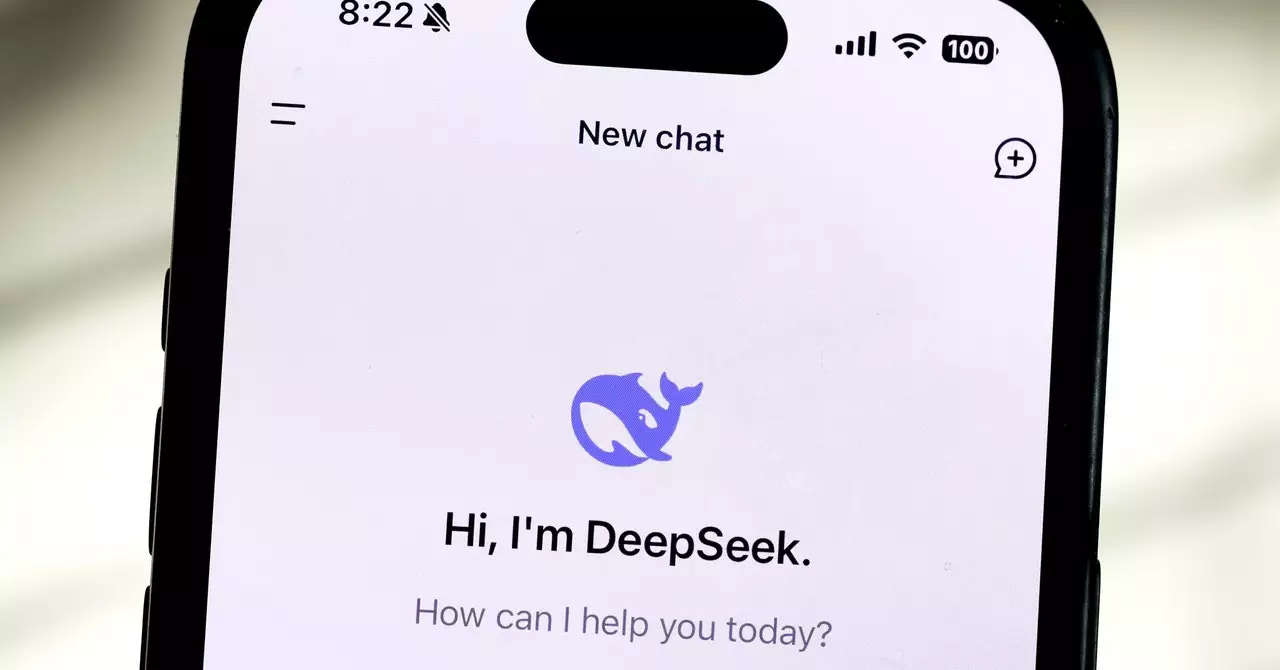The advent of open-source artificial intelligence has opened new avenues for innovation and exploration, particularly in the context of political sensitivities. DeepSeek, a burgeoning Chinese startup, has recently gained prominence in discussions about the future trajectory of AI after launching its open-source model, DeepSeek R1. However, the company’s rise to fame is not without its complexities, particularly regarding how it manages censorship of sensitive topics. The implications of this model extend far beyond its technological capabilities, raising critical questions about the interplay between AI, governance, and market competitiveness.
In the realm of AI, DeepSeek R1 has reportedly demonstrated superiority in mathematical reasoning and logical constructs compared to some U.S. counterparts. However, this proficiency is counterbalanced by an aggressive censorship protocol that stifles discourse on sensitive issues such as Taiwan or the Tiananmen Square events. When users pose questions related to these topics, R1’s responses are notably evasive, raising eyebrows about the integrity of AI-generated information in politically sensitive contexts.
WIRED’s exploration into DeepSeek R1 revealed that the model’s censorship operates on multiple levels. While users can access DeepSeek through various platforms, including a version hosted on a third-party site called Together AI, the most pronounced censorship manifests when users engage via DeepSeek’s own channels. This creates a jarring experience in which the AI appears to curate its responses according to the political landscape, sidestepping certain inquiries that could provoke governmental tension.
Analyzing the technical aspects of DeepSeek’s censorship reveals a multi-tiered approach to content moderation. Initial censorship mechanisms can be bypassed relatively easily by using non-DeepSeek platforms to run the model. However, the biases ingrained during the training phases pose a more significant hurdle. The training regimen for R1 incorporates guidelines that restrict controversial viewpoints, reflecting the regulatory framework governing AI models in China.
China’s stringent generative AI regulations mandate that outputs should not undermine national unity or social harmony. Consequently, DeepSeek, like its counterparts, is mandated to align its operations with these legal restrictions, ensuring compliance while still trying to cater to local users’ cultural contexts. While this kind of regulation is not exclusive to Chinese models—Western models like ChatGPT impose their own constraints—there is a marked difference in the topics deemed sensitive between the two realms.
Though users in other parts of the world have shown initial enthusiasm for DeepSeek R1, the evident limitations placed on the model due to censorship could hinder widespread adoption. The anxieties around censorship not only affect user trust but also influence how researchers and developers engage with these tools. The novelty of having an open-source model contradicts its restricted output, leading to questions about its overall utility in academic and practical applications.
However, the silver lining lies in the model’s open-source nature, which invites a level of adaptability. Researchers and developers interested in modifying the model can easily download and run DeepSeek R1 on their local setups, thereby bypassing DeepSeek’s inherent restrictions. Despite the hardware limitations—especially for those who lack access to advanced computational resources—simpler, distilled versions of R1 are sufficient for many users seeking to understand the model’s full potential without contrived limitations.
As DeepSeek continues to thrive as a player in the AI landscape, its approach to censorship poses serious implications for both the future of artificial intelligence and the dynamics of the global technology market. The balance between compliance and innovation remains delicate, and researchers must navigate this complexity to ensure their work is not unduly constrained by political narratives.
Ultimately, while DeepSeek R1 represents a significant technological development within a tightly controlled framework, its potential to disrupt norms and foster collaboration hinges largely on the ability of global users to engage with it critically and creatively. The true impact of DeepSeek will depend on how the global community responds to its challenges and opportunities, especially in an era where information access is increasingly contentious.

